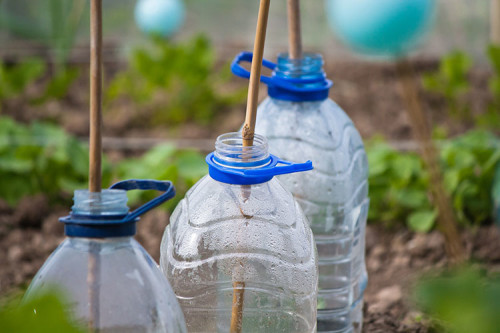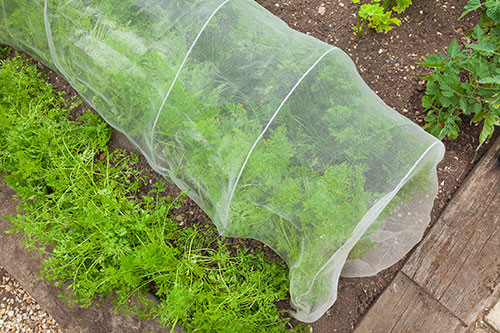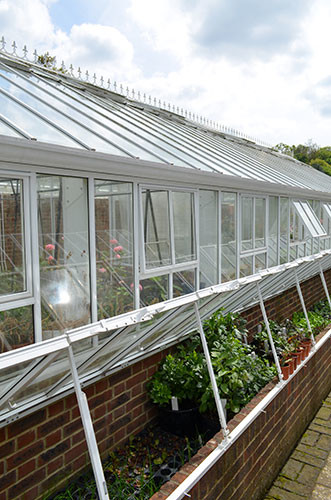Here in South Florida, we’re just getting our primary growing season going because the summer fight against the weeds is too much for many gardeners. But as fall approaches in many other parts of the world, gardeners are now asking themselves how they can get at least a few more months of produce out of their garden. You may find that some of the solutions are even easier than you expected.
- Prevent frost from damaging plants with individual cloches.
Covering your plants as the weather turns cooler will certainly help them produce longer. Some people like to keep it simple and just cover their plants with milk cartons or soda bottles with the bottoms cut out. You can also use upside-down pots, cardboard boxes, buckets or just about anything else that will fit over your plants.

Others take a more sophisticated route and purchase water-filled cloches that add an extra layer of protection as the sun warms up the water around the plant. The water-filled cloches are generally a lot less likely to fly away during a storm, but a rock on top of a bucket or a few inches of soil around the edge to anchor it in place often help. - Build tunnels that cover whole rows or beds.
If you’d like to just have a few cloches to deal with in your garden, explore the possibilities that wire hoops or PVC pipes offer. Simple tunnels can be constructed by draping plastic sheeting over your framework and will keep plants frost-free and just a bit warmer. Do remember to open them up on the warmest of days, though, and don’t forget to keep an eye on them on windy days. Burying the plastic along the sides of your cloche will help them from turning into kites or landing in your neighbor’s garden.

- Build cold-frames or hot beds.
A small, simple structure over your garden beds can capture a lot of heat and allow you to grow long into the fall and winter. Short plants like lettuce, herbs, carrots and bushy beans will do fantastic in cold-frames. Just picture a mini-greenhouse sitting only 1-2 feet high. If you want to get really advanced, look into hot beds which have a heat source underneath the ground. - Take advantage of stored heat in sun-soaked walls of your home, garage or other building.
Walls gather a lot of heat during the day and even on a cold winter day, you could have a temperature difference of 10-15 degrees F. Make use of this free solar energy (especially with south-facing structures) by building a simple lean-to greenhouse or adding trellises for climbing plants - Build a greenhouse for full wind and frost protection.
A greenhouse is certainly one of the best ways to extend your growing season…but also one of the most expensive due to its considerably larger size. But if you can find a way to keep and maintain heat in it (even with solar heating methods), you can often even maintain tropical temperatures in some of the coldest of climates. A greenhouse is also a great place to start seedlings for the following year.

- Store heat in painted milk-jugs and other containers.
You’ve likely noticed that a black car really heats up on a summer day. The same principle can be applied in your garden beds just by tracking down old. Empty plastic bottles or barrels can quickly be painted black to hold in more heat. You can set them into your cold-frames, greenhouses or tunnels to help capture more heat during the day and keep plants warmer at night.
These were just a few of the many ways that you can extend your growing season into the fall and get a jump start into spring. Do you garden into fall or start early in spring? What tips do you have to share?



These are pretty much all the techniques to increase temperature and to protect the plans during the cold season. From my gardening experience, I enjoy best using cold frames, as they have two advantages. They are really efficient for not so tall plans and the construction doesn’t require a large investment. You can even reuse an old window.